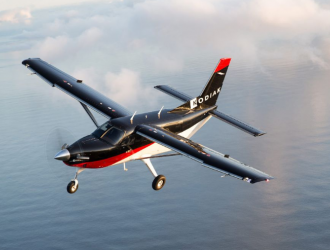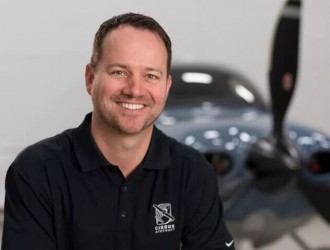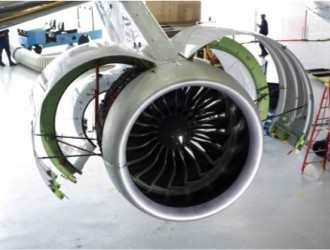In the subterranean depths of a downtown Denver hotel ballroom, airport executives from across North America are gathered at 8:30 a.m. on a Tuesday. Many were out late the night before, commiserating. Times are tough in the airport trade.

They queue up for a breakfast buffet featuring waffles and 2-inch-diameter egg-and-spinach sandwiches. They reload their coffees. Then, at 9:00 a.m. sharp, the aviation nerds troop into an adjacent room, wher the airline representatives await them.
Sitting across from one another at vanilla folding tables, each airport executive has just 20 minutes to woo an airline before moving on to the next "date". To land new or expanded service, they'll sometimes wheedle or even plead with an airline: I really need your planes at my terminal, baby. No one wants to go back home empty-handed. In whatever city they represent, a mayor, city manager, or Chamber of Commerce honcho has been ranting about why there's not more air service.
This kind of airline-airport speed dating has become a common ritual at industry conferences nationwide, as airlines have grown ever more powerful. In the past decade, U.S. airlines have become able to match seat supply and demand with razor-sharp precision - assuring profits and giving them unprecedented power over how to price and wher to fly.
Today, airports hold virtually zero power in their relationships with the carriers. Just 37 percent of airports on the U.S. mainland generate 97 percent of domestic air service demand, according to data compiled by Bill Swelbar, an aviation researcher at consulting firm Intervistas. Airlines can pick and choose the most profitable cities to serve, and even midsize destinations are struggling to compete. If Nashville or San Antonio must hustle like mad for air service, and both do, wher does that leave a town like Lansing, Mich.?
"I'm at the mercy of these airlines," says Sheri Taylor, program manager for air service development at the Wyoming Department of Transportation, which coordinates among 10 state airports.
To prepare for this specific rendezvous, held June 13-15 by Airports Council International-North America, airports big and small hired consultants who scoured databases, prepared reports, projected growth (or contractions) of all sorts, and then devised the most effective pitch points for various target carriers. The speed dates allow airports "to tell the stories behind the numbers," says Rachel Shulman, a consultant in suburban Dallas with Seabury APG and a former Southwest Airlines Inc. network planner.
But those stories don't always mean much to airlines, says aviation consultant Michael Boyd, president of Boyd Group International in Evergreen, Colo. "The problem is there [are] too many airports that are getting hornswoggled into believing that if they do a study they'll get an airline," he says. "Airlines don't work that way, and they haven't worked that way in years."
Boyd is also skeptical that airport-airline speed-date forums yield much, beyond catch-up sessions among people who have probably talked before. "We know every airline out there, and there are no secret airlines you're going to come to one of these and find out about," he says.
Still, airport officials show up, conference after conference, date after date, hoping to get lucky.
Some airlines go into the dates prowling for incentives. Advertising and marketing supports, multiyear user-fee abatements, profit margin pledges, and minimum revenue guarantees are among the more common lures. Sweeteners are no answer, however, if a flight doesn't perform suitably, says Dave Harvey, Southwest's managing director of business development. Gone are the days when a route might take as long as three years to find its groove and mature: "At the end of the day, we look at everything as havin to work on its own, long term," Harvey says during a meeting with Lansing airport officials.
Today, anything beyond six months is a long time to test a route - typically, an airline will pull out quickly if the numbers are considered subpar. In certain cases, airlines have announced a new route but canceled it before the carrier even began flying it, because of weak sales and other data seen between the service announcement and the launch, says Seth Quillin, a Southwest network planner.
Quillin and Harvey are sitting with an executive from San Antonio, Brian Pratte, who has been pressing airlines for more than 18 months for a nonstop flight to Boston. "I'd be remiss if I didn't bring up Boston," Pratte says, summoning a slide on a laptop showing that 34 percent of the passengers to Boston on the Austin and Houston flights actually live closer to San Antonio. That means the true daily passenger count between San Antonio and Boston is 166, not the 109 shown in the figures for last year, Pratte tells the Southwest executives.
Harvey and Quillin are sympathetic to the pitch. But from a network perspective, what's good for San Antonio and what's good for Southwest are not the same. The carrier, of course, has seen all the numbers about traffic that reside in various databases, along with its own extensive information. "We think it would do really well in the summertime," Quillin says of the "very seasonal" route, noting demand troubles Southwest would expect in such months as January and February. Boston is a long flight, nearly four hours, which requires a heavy commitment of "aircraft utilization." That's the duration a Southwest 737 spends flying, stealing time on the plane from network planners and boosting the airline's financial risk. Quillin contrasts Boston with a recent San Antonio "win," a new Southwest nonstop to Kansas City scheduled to begin in November. He notes the lower utilization and, hence, the lower risk. Harvey urges Pratte and his colleagues to celebrate the Kansas City win publicly and work to make it financially successful, as a means to lobby for Boston service in the future.
Three days after his Southwest date, Pratte is optimistic that the Alamo City will get a Boston nonstop at some point. "I really think it's a matter of when, not if. I really do," he says in a telephone call back in his Terminal A office overlooking the runways.
Some of the shortfalls at small airports are outside the airlines' control. The regional carriers that served most of the smaller burgs simply don't have sufficient numbers of pilots for many flights. Ground zero in this service carnage is the February 2009 crash of a Continental Express regional flight near the Buffalo airport, which killed 50 people. The investigation found that both pilots for the carrier, Colgan Air, were likely fatigued, inadequately trained, and the product of an industry in which financial pressures made low salaries endemic. The public was shocked to learn that the flight's 24-year-old first officer earned only about US$16,000 in 2008, her first year flying for Colgan.
In response, Congress mandated that airlines' first officers need to hold an airline transport pilot (ATP) certificate, which requires at least 1,500 flight hours, as opposed to the 250 hours and commercial pilot certificate previously required. That change, coupled with new U.S. rules requiring minimum rest times for passenger pilots, dramatically shrunk the pilot supply for regional airlines and forced several into bankruptcy. Pilot unios contend that the shortage is the result of penurious salaries in that part of the industry, wher U.S. pilots typically begin their careers. Airport officials use words such as "arbitrary," "capricious," and "unknown consequences" to describe the 1,500-hour rule. It has caused widespread air service reductions nationwide - and the loss of all flights at some airports.
Wyoming has been hit as hard as any state by the pilot shortage, given its smaller markets and thin population density. "We are on the cutting edge of wher the s-- hits the fan," says Shawn Burke, an analyst with the state's air service development program.
The state, which has the country's highest average fares, has been forced to innovate to attract air service. One of the newest efforts is a program in which Wyoming buys aircraft capacity on 30-seat jets for flights to Denver from two cities, Sheridan and Riverton. The deal is structured similarly to the routine capacity purchase agreements big airlines sign with regional carriers to feed traffic from small towns to their hubs. In these contracts, the buyer is responsible for revenue management, sales, marketing -- and financial risk -- while the airline merely operates the flights. Sheridan and Riverton use contractors to manage the flights, including pricing.
Beyond the pilot shortage, which is likely to resolve over time as carriers improve wages and other benefits, the larger issue confronting airports is the radical consolidation of the U.S. airline industry. Four behemoths control roughly 86 percent of the domestic market.
The industry's concentration means each airline now has its own well-defended turf and can deploy airplanes to wher they earn the most money. That puts medium and smaller markets at a distinct disadvantage -- even those that have proved solidly profitable for decades -- because their decent performance may be worse than a carrier's opportunity at another airport.
"This trend isn't reversing," says Matthew Maguire, chief executive officer of OneJet, a startup that uses seven-seat business jets to fly routes the airlines have abandoned. "Life is going to get tougher."
Then there's a third industry trend putting pressure on smaller airports: the proliferation of bigger regional jets. Older turboprops that worked well for many airports, such as the 30-seat Embraer 120, are now gone entirely in the U.S.; aircraft with 76 to 100 seats are the new standard. Seventy-six seats are too many for airports that battled to fill 50.
Amid all this gloom, airports have some reasons for hope. Rudimentary scribbling on the back of an envelope suggests that Southwest -- with 200 new Boeing 737 Max jets on order -- won't merely connect all the dots in its route map, fly to Hawaii and Canada, and bolster its Latin American service. It will likely need smaller U.S. cities, such as its forays into Dayton; Flint, Mich.; and Wichita, especially if more markets lose regional carriers. Spirit Airlines Inc., slapped financially by the majors at big hubs, is also moving into smaller markets. As is JetBlue Airways Corp.: Its network has "a hole in the middle of the country," John Checketts, the company's route planning director, told executives during his June 13 presentation. "We wouldn't be here if we weren't interested in adding more dots to the map," he added.
That's the kind of sentiment that cheers Lori Lynah, director of marketing and air service development for Savannah International in Georgia. She came to the Denver dates hoping for JetBlue to complement its daily Savannah-to-New York flights with a new nonstop to Fort Lauderdale. She also had a date with Southwest, even though the carrier doesn't serve Savannah and probably won't do so soon. "It's just continuing the conversation we have had for years," Lynah says.
Will she ever attract Southwest to the charming coastal city of lush squares and exquisitely restored architectural gems?
"One day. One day," Lynah says. "I really do believe it - one day."





